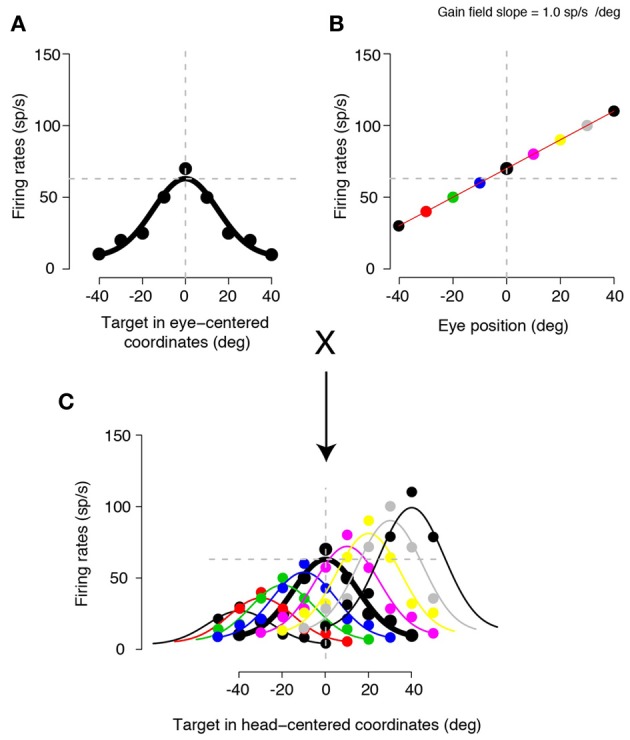Figure 1.

A simulation of a gain field mediated coordinate transformation. (A) A neuron encoding target locations using an eye-centered frame of reference, when the eyes are straight ahead. (B) The same neuron showing an eye position gain field. The responses are shown for a target straight ahead of and aligned with the eyes. The responses are monotonically scaled by changes in eye position (eyes-on-head). For this particular example neuron, the activity increases by 1.0 spikes/sec (sp/s) for each visual degree of rightward change in eye position. Different colored points represent different eye positions. (C) Multiplying the eye-centered tuning curve with different eye positions. Each colored curve represents a tuning curve obtained by multiplying the eye-centered tuning from (A) with each eye position from (B) (in corresponding colors). When the eye position is at 0, that is, the same position as the plot in (A), the tuning does not change (indicated by the thick black traces in A and C). However, when the eye positions change, the tuning curves now scale and shift according to the eye position gain field. These multiplicative interactions result in target representations that can be read out in a head-centered frame of reference; now the responses are tuned relative to the head.
